Geoscience Reference
In-Depth Information
Attacks on people by Fraser Island dingoes in the late 1990s were repeatedly represented to
Australians in ways that highlighted the animals' wildness and difference from domesticated animals.
Clinton Gage and the others bitten by dingoes before and since his death
appear to have had an unwanted, and very real, experience of nature. They
have encountered, it seems, something besides those parts of nature selected
by the QPWS and private operators on Fraser Island. In this case, however,
nature was acting 'erratically': it was a case of either a few 'rogue dingoes' or,
as the website just mentioned intimates, dingoes losing their fear of humans
because they were being fed by them (despite the QPWS regulations). Either
way, it was dingoes' 'otherness' - their singular difference and separateness
from us - that was at issue (
Plate 4.6)
.
However, Stephen Healy's (2007) anthropological research suggests an
alternative interpretation. He argues that the idea that Fraser Island con-
tains 'wild dingoes' is something of a contrivance. It is a fiction consistent
with both the environmentalist values of the FIDO, the demands of the
ecotourist industry and the management practices of the QPWS. In fact,
prior to the recent period, dingoes
routinely interacted
with Fraser Island's
human inhabitants, albeit cautiously, and without incident. While main-
land Australian dingoes were typically hunted by settlers in the past (and are
still seen as pests in many rural areas), things were different on the island,
largely because there were no livestock raised on farms to tempt dingoes and
thus no reason for people to regard them as troublesome predators. From
the 1860s, loggers began to feed dingoes food scraps (thus supplementing
the animals' diet) and, as the island became more settled, twentieth-century
dingoes were allowed to scavenge from public waste dumps. When logging

